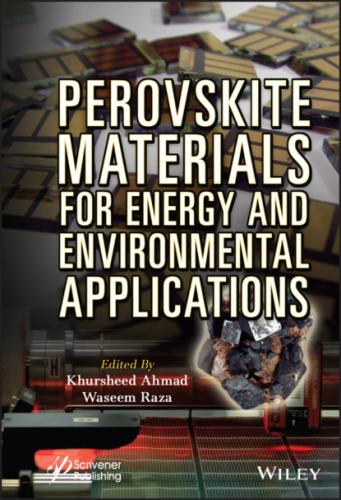(1.54)
B. Auger recombination
Auger recombination process is relatively similar to the process of radiative recombination with the exception that the transitional energy is transferred to an electron or hole that is excited in the respective conduction or valance band (Figure 1.1). Due to Auger recombination the net recombination is expressed as:
(1.55)
Where Cn and Cp are the electron and hole Auger coefficients, respectively.
The most widely used Auger coefficient values were calculated by Dziewior and Schmid (Cn = 2.8 × 10–31 cm6s–1 and Cp = 0.99 × 10–31 cm6s–1) for Silicon having a doping concentration more than 5 × 1018 cm–3.
Auger recombination is relevant in semiconductors with high carrier concentration or also under high level injection (e.g. concentrator solar cells).
C. Shockley-Read-Hall recombination (SRH)
The Shockley-Read-Hall recombination process generally occupies the net rate of recombination in low quality materials having high density of defects.
For single-energy level traps the SRH rate of volume recombination, USRH, is expressed as:
(1.56)
Where τn0 and τp0 are the electron mean carrier lifetime and hole mean carrier lifetime, respectively, and are associated to the charge carrier thermal velocity, vth, the concentration of defect, NT, and the capture cross-sections of electron and capture cross-sections of hole of the specific defect, σn and σp as
n1 and p1 are defined as:
(1.57)
According to definition, n1 and p1 are the free-electron and free-hole concentrations when the Fermi level (EF) lies at the trap energy level (ET).
Actually, all three recombination processes deliberated here occur simultaneously.
The net recombination can be found by addition of the three rates of recombination as:
(1.58)
1.3 Advanced Semiconductor Analysis (ASA)
The ASA program is intended to simulate devices based on amorphous and crystalline semiconductors. The ASA program resolves one dimensional elementary semiconductor equations (Poisson equation and electron continuity equation and hole continuity equation) and utilizes variables such as concentration of free electrons, n, and that of holes, p, and electrostatic potential. Additionally, in order to describe explicit device operation and optoelectronic properties of the material it employs several advanced physical.
The ASA one dimensional (1-D) device simulator is very appropriate for simulating thin film structures of silicon solar cells. The program fulfils the usual requirements for simulating thin-film solar cell devices [3].
For modeling silicon thin-film devices the electronic structure of hydrogenated amorphous silicon (a-Si: H) and hydrogenated microcrystalline silicon (μc-Si: H) need to be considered. The atomic structure of a-Si:H shows spatial disorder leading to the energy band gap with edges of conduction band (CB) and valance band (VB) not well-defined with a continuous density of states (DOS). While studying the transport properties of carriers in a-Si:H, in the DOS distribution, it is necessary to differentiate between the localized states and the extended states. Within the mobility gap, the localized states greatly affect the processes of charge trapping followed by recombination. Thus, as is the case with crystalline semiconductor modeling, the charge trapped inside the localized states cannot be neglected. For the calculation of recombination-generation (R-G) statistics different methods are required for the localized states in the mobility gap of a-Si:H as they can be of different nature. The Shockley-Read-Hall (SRH) recombination is not used for amorphous films in device structures in a-Si:H to model recombination as the states introduced by dopants and/or impurities are negligible compared to the recombination via the tail states or dangling bond states. Though, SRH recombination based on the carrier lifetimes can be used for crystalline materials in the ASA program.
From the optical perspective, in order to achieve greater light conversion efficiencies, both the effective use of solar spectrum and light distribution in the solar cells are significant. Light regulation is accomplished in thin film solar cells through the application of techniques for light trapping. The techniques for trapping of light are focused on substrates with textured surface being introduced and using special (back-) reflector layers. The substrates with textured surface provide rough interfaces to the solar cells. The light incident at rough interfaces is scattered and the simulation of solar cells must consider the rough interface scattering mechanisms so as to precisely assess the generation profile for charge carriers within the solar cell. It needs the design of optical models which take into account propagation of both coherent nonscattered (specular) light and incoherent distributed (diffused) light through a system.
To use the solar spectrum efficiently, a multi-junction approach is required in thin-film silicon solar cells. At an interface between two neighbouring junctions, the tunnelling assisted recombination is accountable for the movement of the charge carriers through a solar cell with several junctions. Such an interface is defined as the tunnel-recombination junction (TRJ). Two methods can be used for modeling TRJ in the ASA program. The Delft approach utilizes the improved transport of carriers in the high-field region of TRJ and the trap-assisted tunnelling model. The Pennsylvania approach utilizes the implementation of a strongly defective layer with a sharply compact bandgap at the interface of n/p and the gradation of the n-layer and p-layer mobility gap in the regions next to the defective layer.
The ASA program’s key characteristics are outlined [4]:
Amorphous and/or crystalline multilayer semiconductor device modeling
Models including both the extended and the localized (tail and defect) state that describe a complete DOS as an energy function.
Use of the defect-pool model for the distribution of defectstates in a-Si:H
Basic statistics for generation-recombination of donor and acceptor states and of ambipolar states
Optical models for measuring the absorption profile in flat and/or rough interfaces
Constant adjustment (gradation) of virtually all input parameters as a function of position in the device or in the gap energy level
Tunnel-recombination junction model
a-Si:H solar cell degradation modeling
Written in language ANSI C
The ASA program can be installed on computers working under Windows or Linux operating systems. The ASA program is protected against unauthorised use and therefore its operation is allowed only with the simultaneous use of the ASA protection key [5–7].
Here,
